Table of Contents
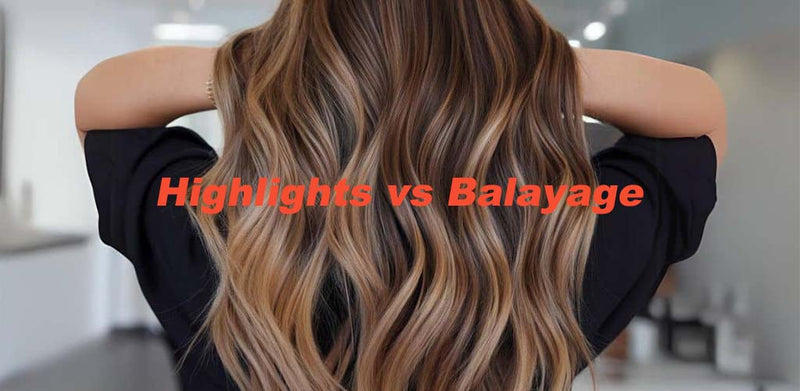
Deciding whether to go with highlights or balayage is hard for people looking to dye their hair. Today, balayage is most associated with the Parisian style it was born in. Balayage gets its name from the French word barber which means to sweep. A new method involves sweeping color freehand to achieve a soft and naturally sunny appearance. Meanwhile, traditional highlights remain popular in salons.
The difference is made clear in how stylists use color and your need for color touch-ups. The formula in a balayage coloring lasts longer, so only occasional touch-ups are needed. Highlights, on the other hand, need work every eight to twelve weeks because you can see where the hair has grown out. Balayage costs more, ranging from $150 to $400. Highlights are cheaper, costing between $75 and $200.
When we compare the two, balayage influences softer regrowth lines and custom looks, while highlights cause more noticeable, even color changes. A balayage will work well on most hair, but highlights should start on darker hair.
What are the Difference Between Highlights vs Balayage?
Looking at how these processes are involved in the application, there are apparent differences between them. Both dyeing and color lifting methods add depth and brightness to hair, but the results are not the same.
Balayage: Freehand painting to create a natural look

Balayage involves painting color by hand without foils or caps. Stylists apply color with sweeping motions beginning mid-shaft and getting stronger towards the ends. This creates a natural blend with a color placement that looks like sun-lightened strands.
Balayage influences customizable options. By painting each area of your hair themselves, stylists can layer the color to go well with your hair, face and style. This design creates a classic look with many different tones.
Highlights: Foil-based method to lighten hair in a structured way

For regular highlights, use foils to separate hair strands during the coloring process. This method involves weaving or slicing sections and then wrapping each lightened strand in foil. The foil stops the color from spreading and keeps heat in for effective lightening, making the color consistent from root to tip.
At TopUnique Hair, our highlights produce noticeable color changes with clear, lighter sections starting at the roots, perfect for significant transformations.
Key differences in application and finish
The main contrast in a side-by-side comparison of Highlights vs Balayage focuses on how they're applied and their result:
|
Feature |
Balayage |
Highlights |
|
Application |
Freehand painting without foils |
Foil-wrapped sections |
|
Color placement |
Typically, mid-shaft to ends |
Root-to-tip saturation |
|
Appearance |
Natural, sun-kissed, gradual blend |
Structured, uniform, distinct sections |
|
Maintenance |
Touch-ups every 3-6 months |
Refresh every 6-8 weeks |
|
Grow-out |
Gradual, no harsh lines |
More visible regrowth |
|
Best suited for |
Natural-looking dimension, low maintenance |
Bold color changes, maximum brightness |
A notable distinction between highlights vs balayage relates to their growth pattern. Balayage occupies "vertical spaces," allowing it to grow out more than highlights, which grow out. " This means balayage requires fewer salon visits—a significant advantage for those with busy schedules.
How do balayage and highlights differ in their outcomes? Balayage creates depth through subtle color shifts that blend, while highlights produce a more noticeable contrast and uniform lightness throughout your hair.
Types of Balayage and Highlights Explained
Hair coloring has evolved beyond simple all-over dye jobs. To grasp the distinction between balayage and highlights, you should know that each method has numerous variations. These different approaches create different looks and suit various hair types.
Full vs. Partial Balayage
Full and partial balayage offer unique approaches to this hand-painted technique. Full balayage covers the whole head, creating maximum brightness and depth. In contrast, partial balayage focuses on specific areas like the top layer or face-framing pieces to produce a subtle effect.
We suggest partial balayage for first-time color clients or subtle changes, which has benefits like:
· Quicker salon visits (1 hour instead of 3-4 hours for full)
· Cheaper (USD 250-400 compared to USD 300-600)
· Less hair damage because fewer sections get treatment
Our experts point out that partial balayage makes subtle highlights while keeping natural color, but full balayage gives noticeable depth all over.
Reverse Balayage and Flamboyage
Reverse balayage puts darker strands on lighter bases, which is perfect for blondes who want to go darker. This method:
· Adds dimension to lightened hair
· Allows natural grow-out
· Cuts down on regrowth lines
· Tones down bright blonde
Flamboyage mixes traditional balayage with see-through sticky strips for satisfactory results.
Babylights, Lowlights, and Chunky Highlights
When you compare balayage hair with highlights, these special techniques create different looks:
Babylights mimic the delicate, sun-kissed streaks you notice in children's hair. To create baby lights, hairdressers take very slim sections—much tinier than regular highlights—which results in a gentle glow. You see them near the hairline and part to appear natural.
Lowlights do the reverse of highlights. They introduce darker tones to add depth. , they're 1-2 shades darker than your primary hair color. They excel at bringing richness to light hair or creating contrasts.
Chunky highlights are trendy again after their popularity in the 90s. These broad light sections now frame the face like "ribbons" instead of covering the whole head in stripes.
Peekaboo and Foilyage Techniques
The comparison of highlights vs. balayage includes these methods:
Peekaboo highlights create hidden color under the top layer of hair, showing bright hues when you move or style your hair. This method gives you options, letting you hide bold colors when you need to, which works well for both work and casual settings.
"Peekaboo highlights let you change your style," says our TopUnique Hair creative director. "Your look changes based on how you style your hair."
Foilyage combines the best parts of highlights and balayage. It mixes freehand painting with foil use. Our stylists paint color-like balayage, then wrap chosen strands in foil. This gives precise lighting without harsh lines.
Each method boosts natural beauty while matching how much upkeep you want.
Pros and Cons: Balayage Hair vs Highlights

Choosing between Highlights and Balayage involves more than looks. At TopUnique Hair, we help customers weigh these options to pick the method that best fits their daily lives and hair goals.
Balayage: Simple to maintain but pricier at the start
Balayage needs touch-ups every 3-6 months, suiting busy lives. The smooth grow-out gets rid of clear regrowth lines. Prices range from USD 70-500, based on location, hair length, and skill. Even with higher upfront costs, fewer salon trips often lead to savings over time.
Partial balayage gives a cheaper option (USD 250-400) to try out color changes.
Highlights: More eye-catching, but require frequent touch-ups
Regular highlights work well to create bold, noticeable changes. They strikingly brighten your hair and make consistent color patterns that add lively depth to your hair.
The dramatic effect of highlights requires commitment. For most clients, new growth becomes visible after 4-8 weeks, necessitating touch-ups with standard highlighting methods. The typical maintenance schedule is between 6-10 weeks, which is more frequent than balayage.
At TopUnique Hair, we recommend highlights to clients who desire the brightest appearance or aim to conceal gray hair. While highlights cost less per session (USD 20-150), more regular appointments may result in higher expenses in the long run.
Hair health and damage considerations
The main distinction between highlights and balayage lies in their effect on hair health. Balayage tends to cause less harm because it uses less lightener and avoids heat-trapping foils that can lead to over-processing.
Regular highlights, while suitable for lightening hair color, can put more strain on delicate hair because of the heat trapped by foils during the process.
Both methods need special care after treatment. At TopUnique Hair, we suggest:
· Using shampoos without sulfates
· Cutting down on heat styling
· Deep conditioning once a week
· Keeping up with toner treatments
Think about your hair type and how much upkeep you're willing to do when picking between these methods.
Side-by-Side Comparison: Highlights vs Balayage 2025
In 2025, people are still talking about whether to get Highlights or Balayage. As stylists get better at these techniques and customers change what they like, the debate keeps going. This comparison breaks down the key differences to help you choose what’s best for your next hair appointment.
Application Method: Freehand vs Foil
The main difference between balayage and highlights lies in how they are applied. Balayage uses a freehand painting method. At TopUnique Hair, colorists brush lightener right onto the hair in sweeping strokes. This artistic approach needs lots of practice to get right, as each stroke must be planned to create a smooth color transition.
On the other hand, traditional highlighting involves precise sectioning and placing lightener in placed foils. The foil's heat speeds up the lightening process, making it work well for darker hair that needs a big change. At TopUnique Hair, our stylists use this step-by-step process to have full control, making sure the results are even from roots to ends.
Maintenance Frequency: 3-6 months vs 6-8 weeks
If you watch over balayage hair and highlights, you’ll find that they need to be maintained differently. How often you touch up your balayage can be every 3-6 months, depending on how much difference you want and your hair’s growth rate. Many people can wait 8-12 weeks between appointments.
On the other hand, traditional highlights need to be freshened up every 6-8 weeks to keep them looking good. This difference happens because balayage grows out more—it goes up instead of across. At TopUnique Hair, we help our customers figure out the best schedule to maintain their color based on their goals.
Best for Hair Types: Fine vs Thick Hair
Hair texture significantly influences coloring choices. Balayage benefits fine hair, adding volume without overwhelming delicate strands. Both techniques suit thick hair—balayage creates natural depth, while highlights add movement.
Foil highlights work better for shorter styles, maintaining definition. Balayage suits longer hair, allowing easier color application.
Visual Results: Subtle blend vs. Bold contrast
Highlights vs. balayage create distinct looks. Balayage delivers sun-kissed, multi-layered color with smooth transitions, appearing more natural with gradual shade variations.
Highlights create deliberate patterns with distinct natural and lightened strands, perfect for dramatic transformations at TopUnique Hair.
Both techniques yield stunning results when professionally executed, with choices depending on maintenance preferences and hair type.
Highlights vs. Balayage Photos and Real-Life Results
Photos showing Highlights vs. Balayage influence our understanding of how each method affects different hair types and shades. Seeing real-life changes helps you get a sense of what your color journey might look like.
Before and After: Balayage Transformations
Balayage transformations show a natural shift from darker roots to lighter ends. Honey brunette balayage adds depth without significant color changes, which works well for people who want a subtle boost. A standout example is the "reverse balayage" method. This adds darker shades back into over-processed blonde hair, breaking up the sameness while creating depth and dimension. This approach solves the common problem of keeping up very light hair.
French balayage influences personalized results that shape the face and make hair look thicker. These changes often require patience, such as moving from an uneven previous color job to a well-blended blonde, which might take several appointments.
Before and After: Highlight Transformations
Traditional highlight transformations show more structured color patterns. So, clients wanting brighter hair often pick full foil highlights, which lighten hair from root to tip. Partial highlights, though, offer a cheaper option while still adding noticeable depth.
Before-and-after pictures of highlight makeovers often show big changes, such as going from ombré back to blonde. The outcomes display a clear difference between the highlighted parts and the base color—this creates that distinct multi-tonal look that side-by-side comparisons of Highlights vs. Balayage make clear.
Final Thoughts
Deciding between highlights and balayage depends on your habits and the time you’re willing to spend on your hair. A balayage style gives your hair a natural, sun-kissed effect and only requires a new tone every 3 to 6 months, perfect for people who care less about upkeep. Although hurting your wallet at the start, it works out better in the long run since you don't pay for salon visits as often.
Traditional highlights remain perfect for achieving bright, uniform patterns and noticeable depth. Foil application delivers striking results but requires maintenance every 6-8 weeks. Though less expensive per session, annual costs may increase due to frequent touch-ups.
Your choice depends on the desired outcome—natural depth or bold contrast—and your hair type. Balayage benefits fine hair with its subtle dimension, while highlights can break up thick hair.
At TopUnique Hair, our expert colorists excel in both techniques and deliver customized results when you choose hair systems. Contact us at +1-833-785-5654 for a personalized consultation tailored to your hair goals.


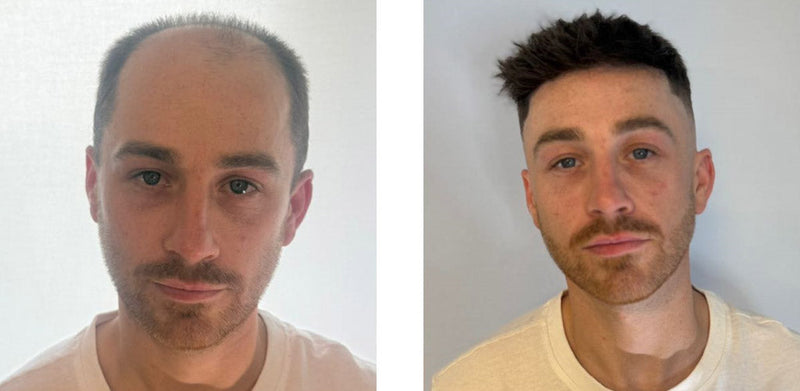
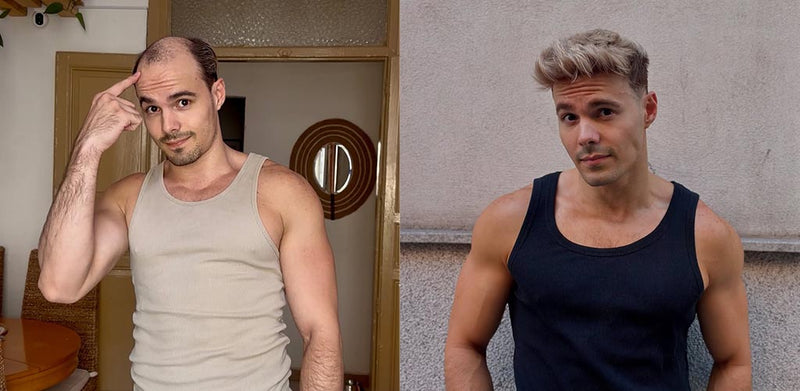
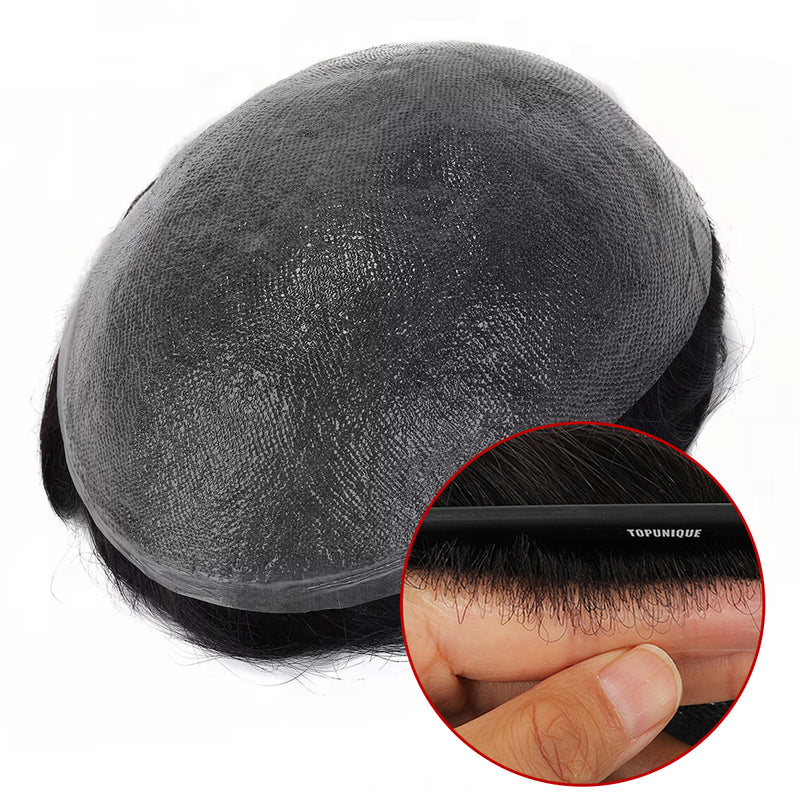
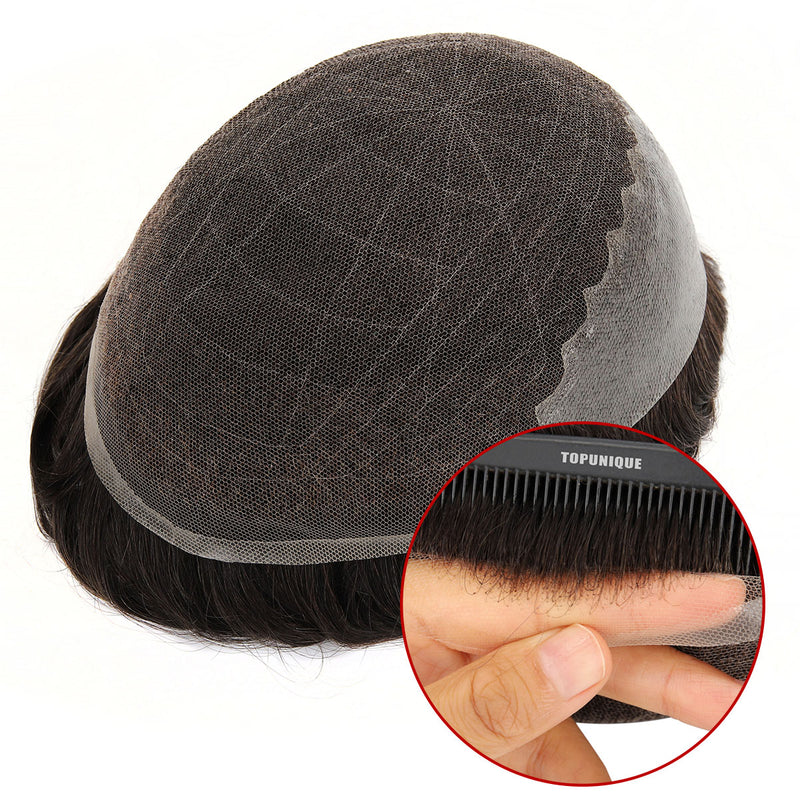
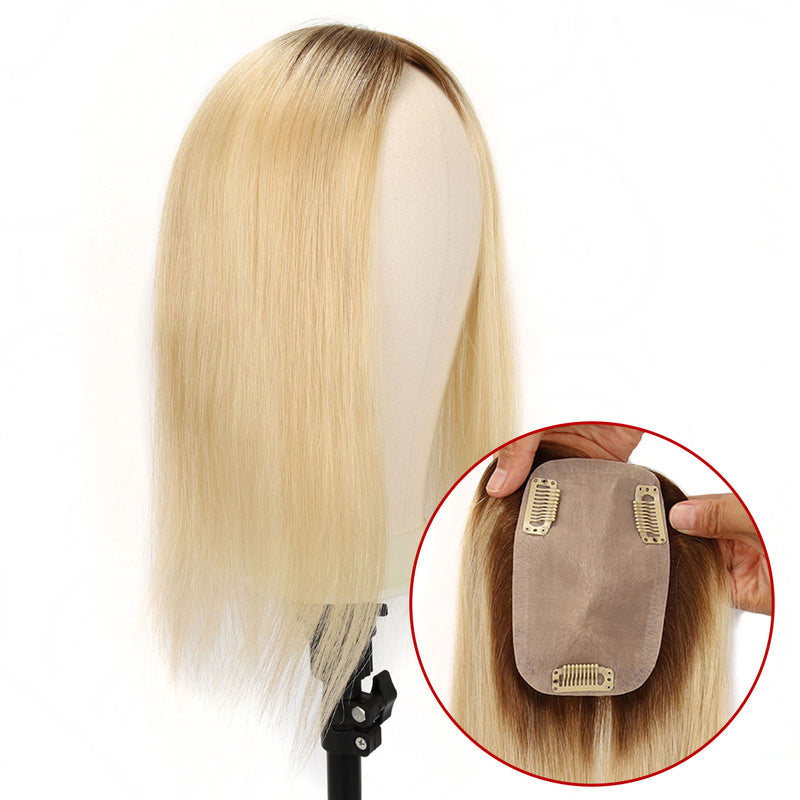
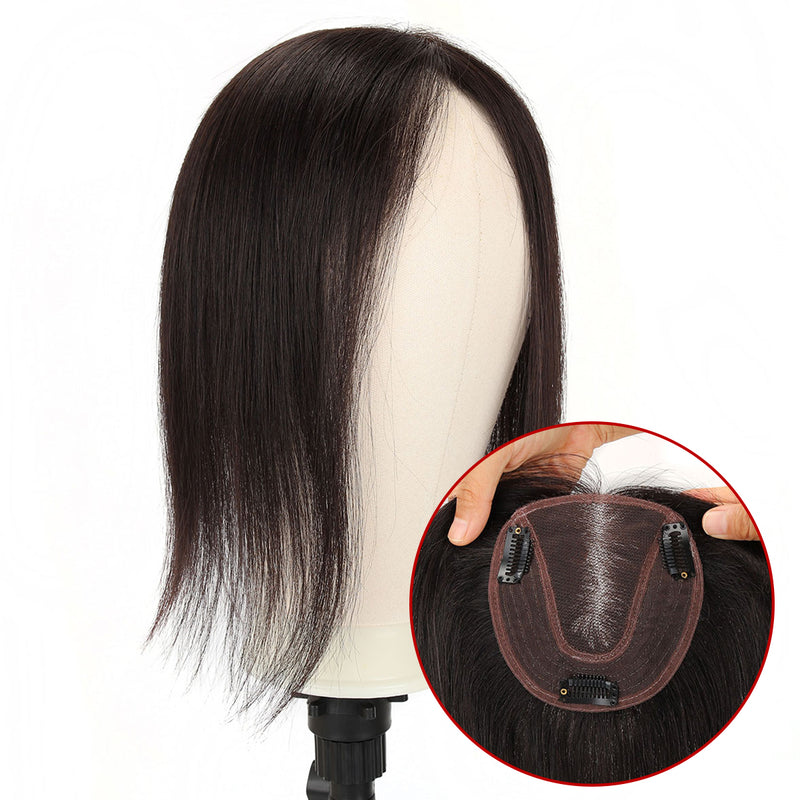


0 comments